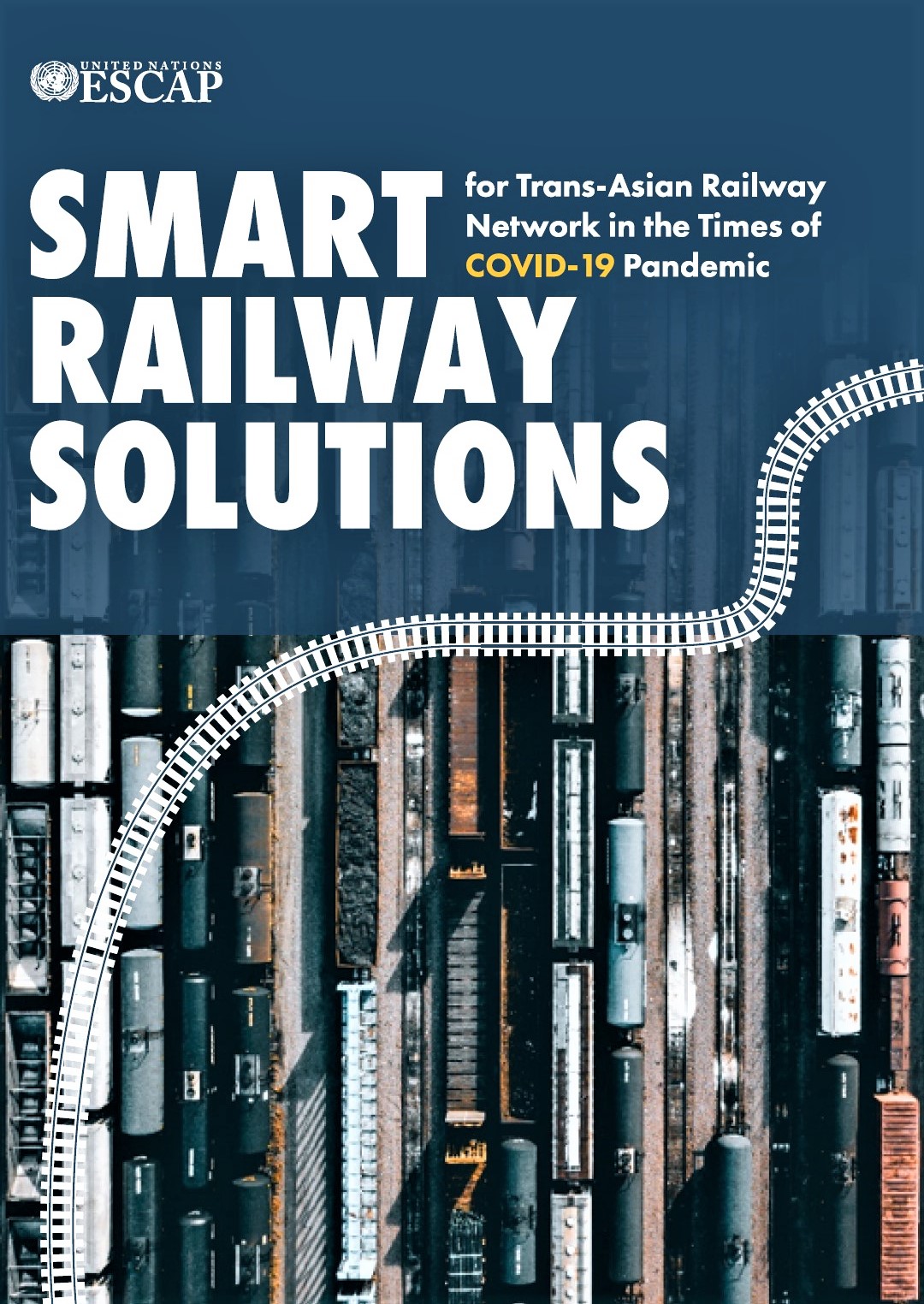
To support trade and transport connectivity globally in times of pandemic the United Nation agencies have jointly launched a project titled- Trade and transport connectivity in times of pandemics: with overarching objective of developing contactless, seamless and collaborative solutions to preserve and further enhance the trade and transport connectivity. In Asia and the Pacific, ESCAP is leading the project and has initiated series of studies aimed at supporting countries in this direction.
The present study on smart railway solutions has been carried out under the project with aim to identify smart railway solutions that are proven to be successful elsewhere and are potentially replicable and scalable. Not all solutions would have equal importance or relevance for the railways of the region.
The COVID-19 pandemic is changing the dynamics of international freight transport as no single event has probably done before in the recent past. The outbreak of the pandemic has adversely impacted freight transported by all other modes other than by rail.
The increase in freight carried by railways is not surprising, given its distinct features, that are working to its advantage in the current situation. International railway transport uses less manpower over long distance and accordingly there are fewer health checks, unlike, for example, in road transport where checks and congestions at border crossings cause more frequent human interactions. Each freight train can carry between 40 to 70 times equivalent of lorry loads of goods in a much more safe and secure environment giving rail a distinct advantage.
The opportunities for switching more cargo to rail during the COVID-19 recovery phase and making shift towards railways more enduring in national and international transport- would require enhanced competitiveness of railway transport compared to other modes.
To support trade and transport connectivity globally in times of pandemic the United Nation agencies have jointly launched a project titled- Trade and transport connectivity in times of pandemics: with overarching objective of developing contactless, seamless and collaborative solutions to preserve and further enhance the trade and transport connectivity. In Asia and the Pacific, ESCAP is leading the project and has initiated series of studies aimed at supporting countries in this direction.
The present study on smart railway solutions has been carried out under the project with aim to identify smart railway solutions that are proven to be successful elsewhere and are potentially replicable and scalable. Not all solutions would have equal importance or relevance for the railways of the region.
Each railway could assess its own situation and determine which smart solutions would be more beneficial and applicable for them. In this regard, the study may also be seen as an inventory of smart railway solutions that would expand the knowledge of railways of the region on the range of options available to deal with emerging challenges and opportunities in the era of pandemic.
First part of the study provides context for smart railway solutions along the Trans-Asian Railway Network. It provides insight into the emerging trends in international railway transport followed by analysis of the impact of pandemic on the railway freight flows along the Trans-Asian Railway network. Identification of common priorities of the railways of region and the focus areas for specialized railway organizations follow next.
The objective of this part is to underscore the importance of using the current crisis as an opportunity to further enhance the comparative advantages of railway transport through use of smart railway solutions that would enhance the competitiveness of the railways in the post pandemic environment.
The second part of the study provides six modules on smart railway solutions. These modules are smart railway operations, smart railway maintenance, smart train driving, smart railway border crossing, smart railway customer orientation and smart railway investing. Each module has submodules that explain the range of smart railway solutions with details.
The study is complemented by the Annexes providing information on new rail freight services in 2016-2020 and key priorities of the TARN member countries as defined in official national strategic documents as well as smart railway solutions.